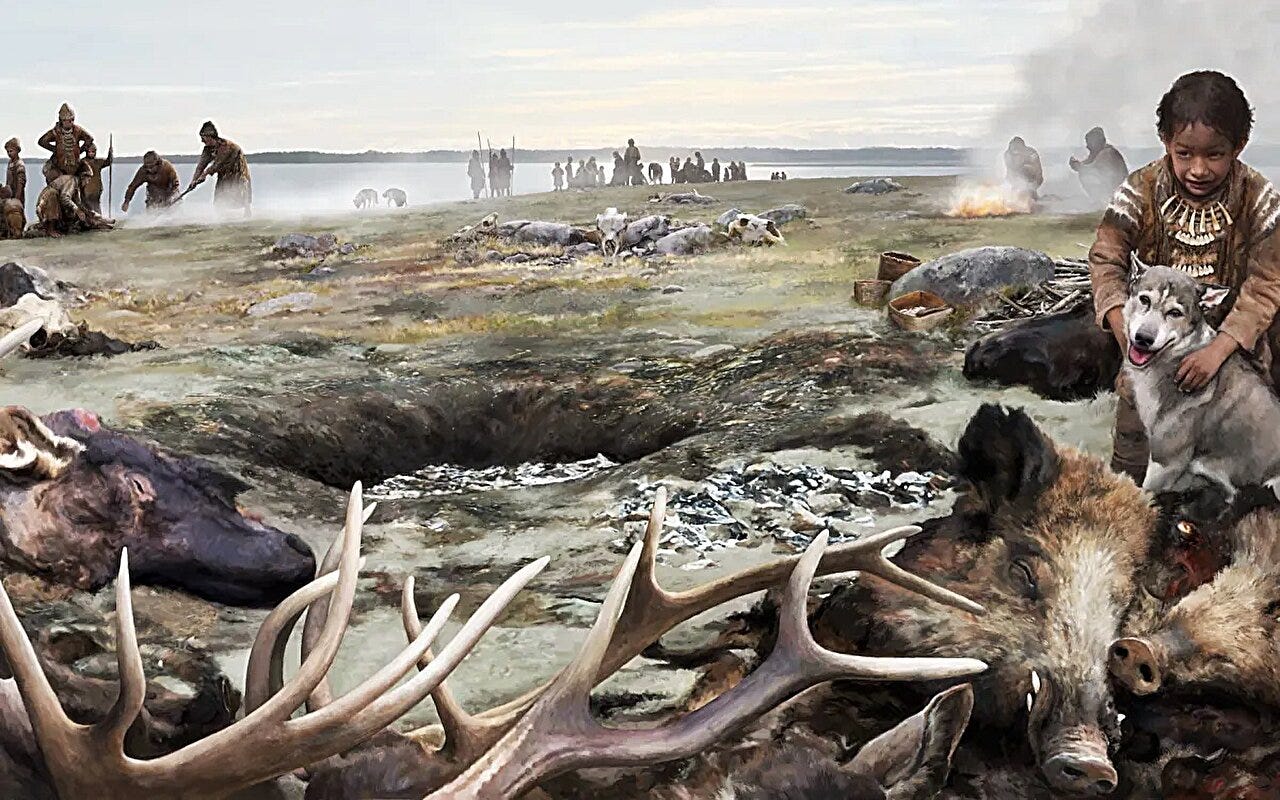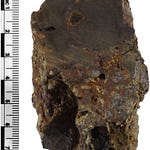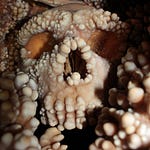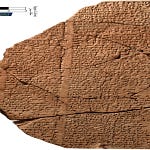In a remote corner of Latvia, archaeologists have uncovered clues1 to a surprisingly complex world of Stone Age craftsmanship. For decades, the Zvejnieki cemetery site has been known for its rich assemblage of animal tooth pendants, with over 2,000 examples excavated from the graves of Mesolithic and Neolithic hunter-gatherers. But new research suggests these small artifacts are more than just decorative grave goods. They may tell a deeper story—one about how people cooked, feasted, and forged connections through shared traditions of tool-making, death rituals, and human-animal relationships.

From Ornament to Operation
Animal teeth were among the most widespread raw materials for personal ornamentation during the Stone Age, particularly in the boreal forests and river valleys of northern Europe. But until now, archaeologists have largely skipped over the crucial question: how were the teeth actually extracted from skulls and jaws? This early step in the crafting process has gone underappreciated. The latest study, published in Archaeological and Anthropological Sciences, takes aim at that oversight.
By using experimental archaeology, Aija Macāne and colleagues set out to replicate the various methods prehistoric people might have used to remove teeth from animal skulls, including Eurasian elk, red deer, and wild boar. These animals account for the bulk of tooth pendants found in the Zvejnieki burials, which span from 7500 to 2500 BCE.
Their experiments tested seven techniques, including cutting with flint, smashing with cobbles, leaving mandibles to decay, soaking in water, applying direct fire, boiling in ceramic pots, and steam-cooking in earth ovens. The goal wasn’t just to see what worked, but to identify which methods matched the archaeological specimens—where teeth show minimal damage and little trace of extraction.
"Our experiments show that cooking methods like boiling and steaming were highly efficient and left no visible extraction marks on the teeth," the team wrote. "Direct fire, on the other hand, made the enamel brittle and caused damage, inconsistent with the archaeological record."
Tooth Extraction as a Culinary Practice
One of the more surprising conclusions of the study is that tooth extraction wasn’t always a standalone activity. It was often entangled with food preparation. When whole animal heads were steam-cooked in earth ovens, for example, the teeth came loose naturally once the gums softened—a byproduct of preparing brains and cheek meat for consumption.
"Cooking pits allowed for efficient recovery of complete sets of teeth with minimal effort," the researchers noted. "They also left the bone intact for tool-making and the meat ready for eating."
This insight hints at a communal practice, where the processing of animals for food, tools, and adornment happened in tandem. The same fire that warmed bodies and cooked food may also have prepared materials for burial offerings and clothing accessories.
The Ritual Life of a Tooth Pendant
Many Zvejnieki graves contain dozens of teeth, some exceeding a hundred. These were not randomly accumulated scraps. They were curated, sometimes over lifetimes, and arranged deliberately in burials. A double grave at the site, for example, contained 332 teeth from at least 24 wild boars, 17 red deer, and 15 elk—alongside more exotic species like seals and otters, likely obtained through trade or long-distance travel.
"The scale of tooth accumulation in some graves suggests long-term collection, exchange, or inheritance," the study explains. "These were not casual decorations; they were deeply embedded in the fabric of social and ritual life."
In some cases, the teeth may have been sewn onto shrouds or garments for funerary display. Grinding marks at the roots support this, suggesting attachment to cloth or leather. That these pendants often show little evidence of wear before burial hints they were made specifically for ceremonial use.
Revisiting Human-Animal Relationships
Beyond the practical methods of extraction, the study opens broader questions about the relationships between humans and animals in the Stone Age. Extracting a tooth isn’t a neutral act—it carries symbolic weight, especially when the animal played a role in diet, ritual, or belief.
By documenting which extraction methods were cleanest and most efficient, the researchers have drawn attention to a neglected stage in the chaîne opératoire—the chain of actions that transforms raw material into a finished object. And in doing so, they show that tooth pendants were not simply end products, but reflections of an entire system of interaction: killing, butchering, cooking, crafting, and commemorating.
"The integration of food preparation and ornament production in communal settings likely reinforced social ties," the authors argue. "Feasting and funerary rituals may have been linked through these shared practices."
A New Lens on Old Ornaments
This study doesn't just reconstruct prehistoric technique. It reframes the way archaeologists might interpret personal ornaments more broadly. Rather than viewing teeth as symbols stripped of their animal origins, it invites consideration of the full life history of a pendant—from the animal’s death to the craftsperson’s fire to the grave in which it rested.
The past, it turns out, may have been less compartmentalized than the present. In the Zvejnieki of 7,000 years ago, cooking, crafting, and remembering were likely part of a single event, performed by people whose knowledge of animals extended far beyond the hunt.
Related Studies
d'Errico, F., & Rigaud, S. (2011). "A Decorated Red Deer Tooth Pendant from the Middle Paleolithic of Germany." Antiquity, 85(328), 635–648. https://doi.org/10.1017/S0003598X00068052
Rainio, R., & Mannermaa, K. (2021). "Tracing Use-Wear and Manufacture on Stone Age Tooth Pendants in Finland." Journal of Archaeological Science: Reports, 39, 103090. https://doi.org/10.1016/j.jasrep.2021.103090
Langley, M. C., Aplin, K. P., & Clarkson, C. (2023). "Boiling and Pit-Cooking in Prehistoric Australia: Organic Container Technologies and Thermal Experiments." Journal of Archaeological Method and Theory, 30(2), 265–289. https://doi.org/10.1007/s10816-023-09566-1
Tejero, J.-M., Djakovic, I., & d'Errico, F. (2021). "Upper Paleolithic Tooth Pendants from Georgia: Symbolism, Technique, and Ornamentation." Quaternary International, 586, 37–51. https://doi.org/10.1016/j.quaint.2020.09.008
Macāne, A., Nordqvist, K., Mannermaa, K., Needham, A., Pomstra, D., Alcobendas, G. C., Reblis, J., Zagorska, I., & Little, A. (2025). First stage in technological production of Stone Age animal teeth pendants: evidence from Zvejnieki (Latvia) and wider social implications. Archaeological and Anthropological Sciences, 17(7). https://doi.org/10.1007/s12520-025-02260-0









